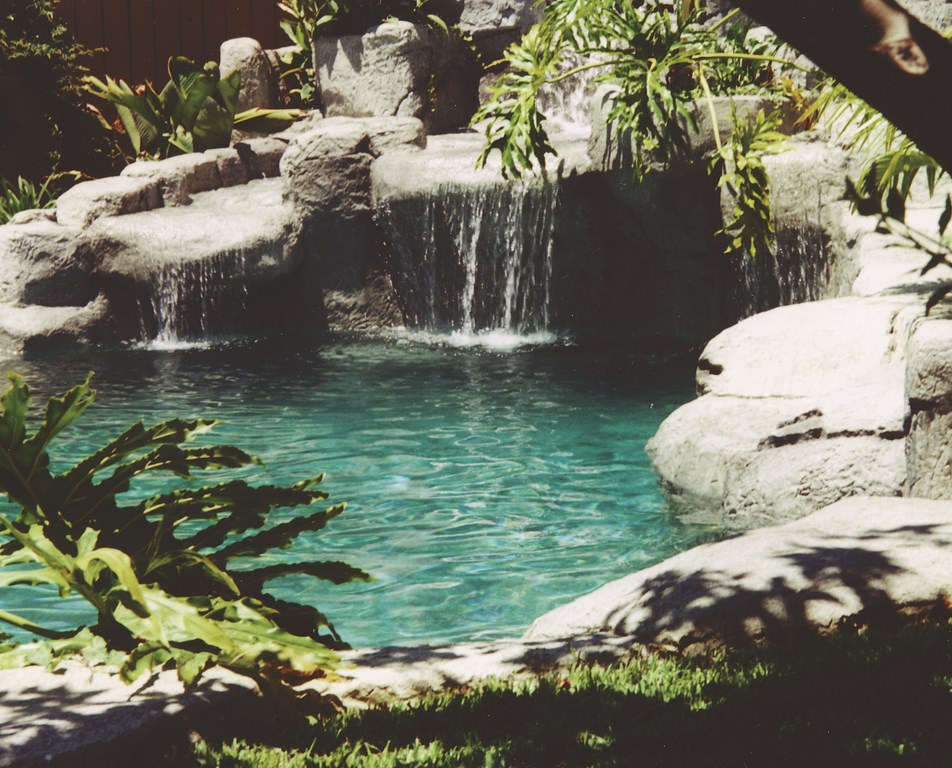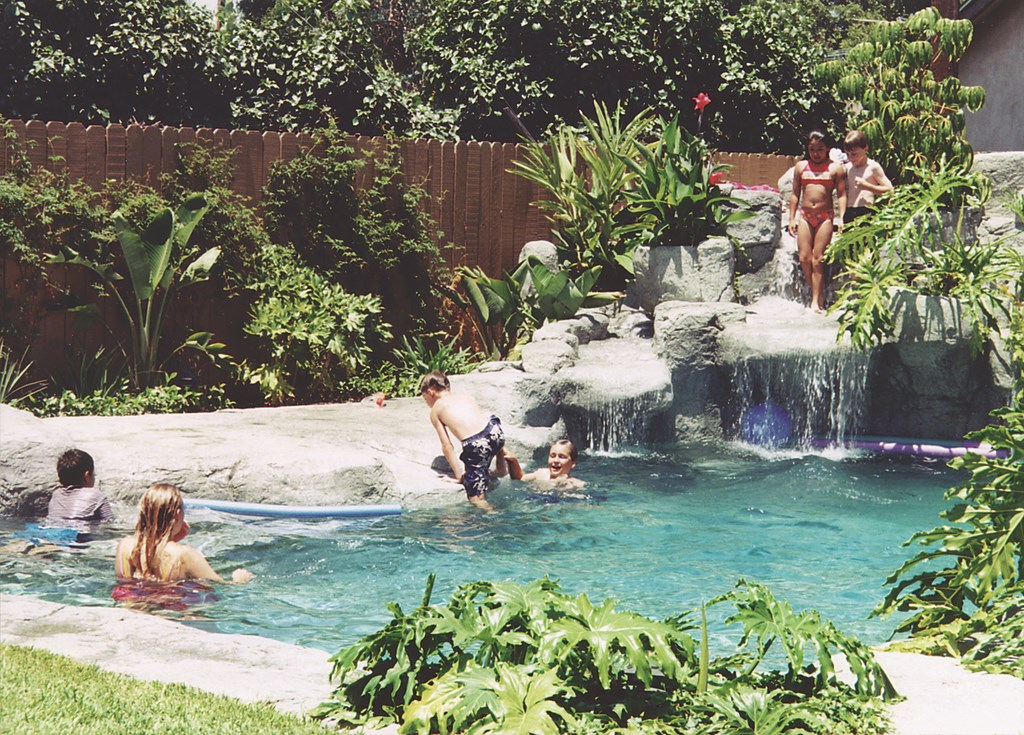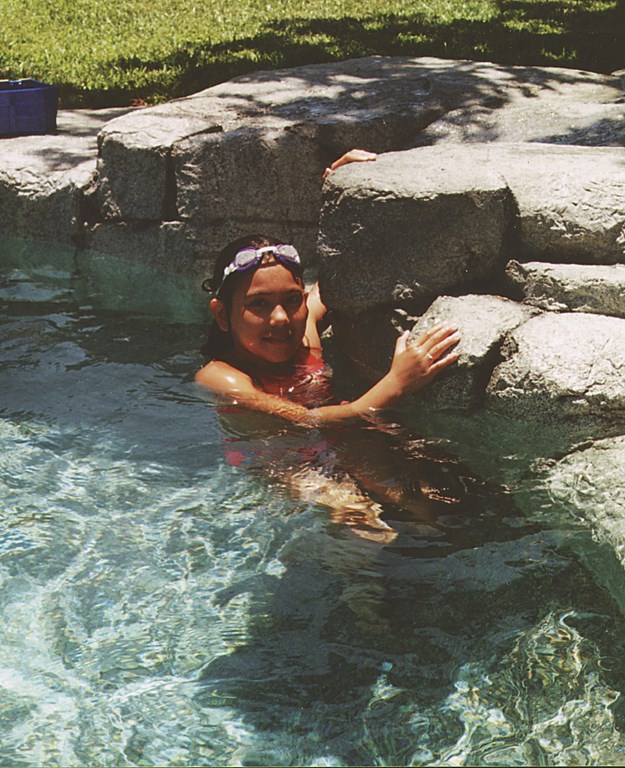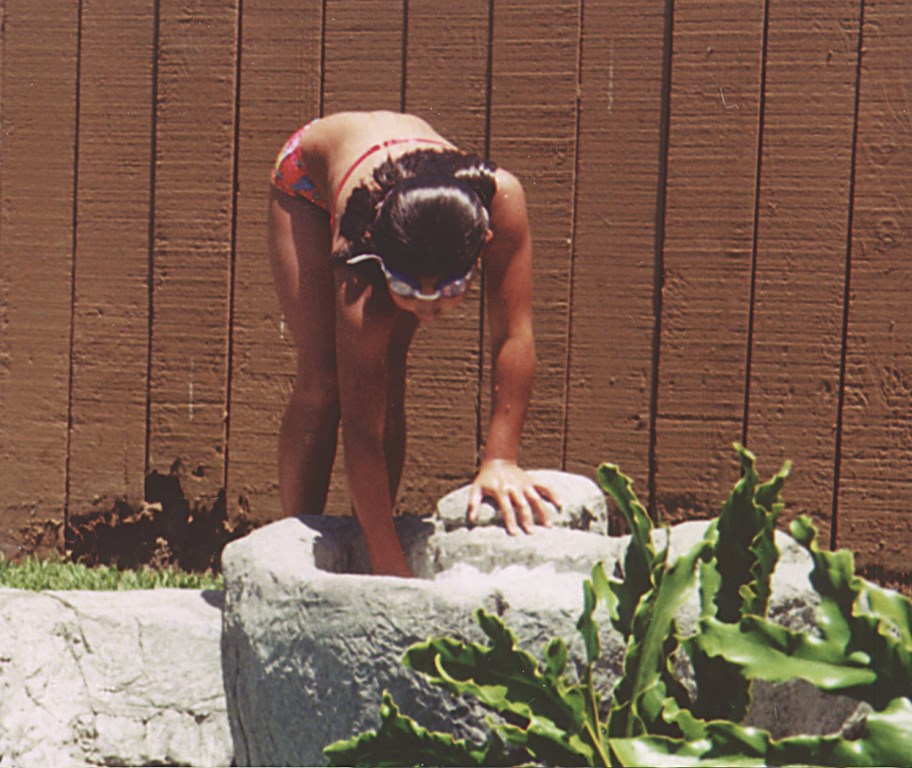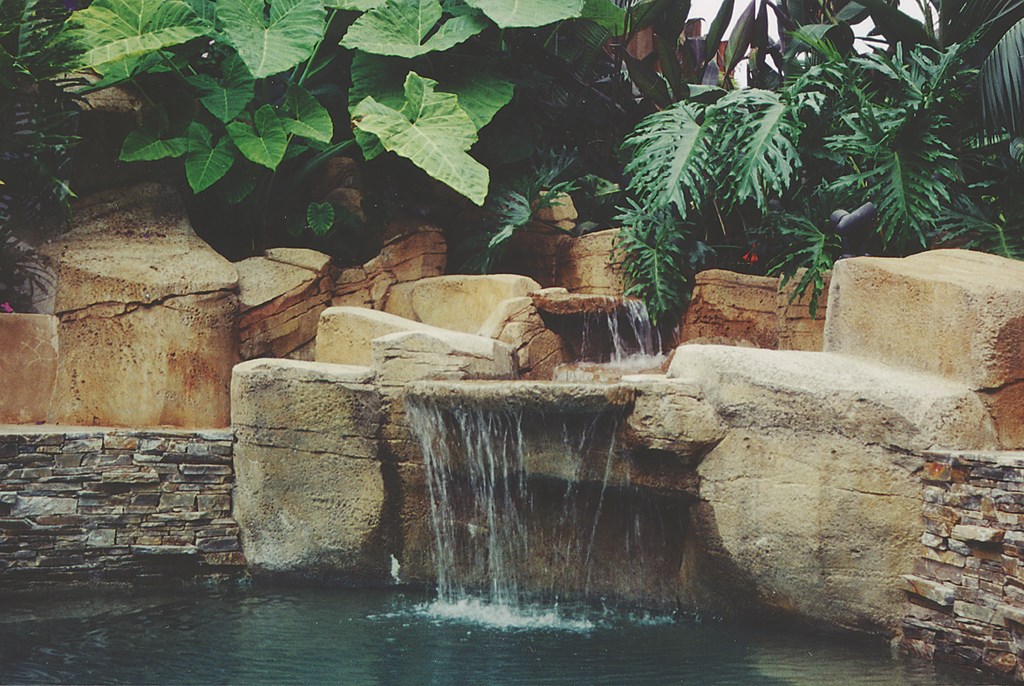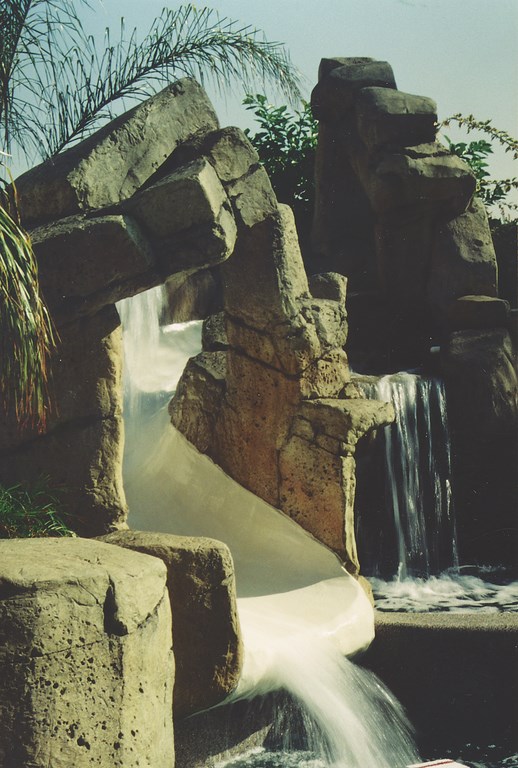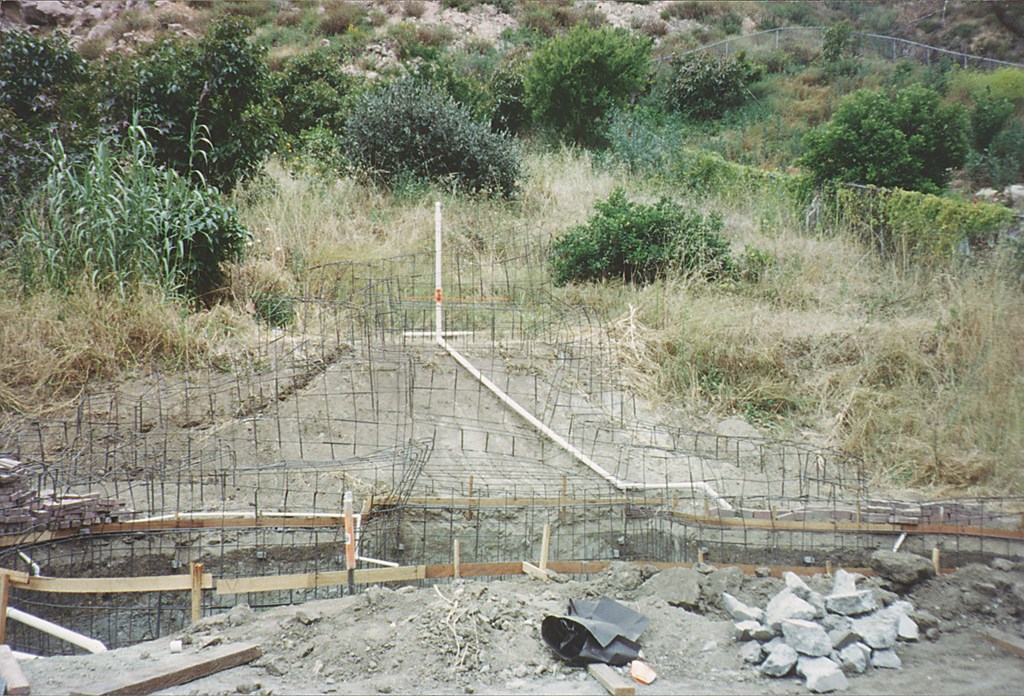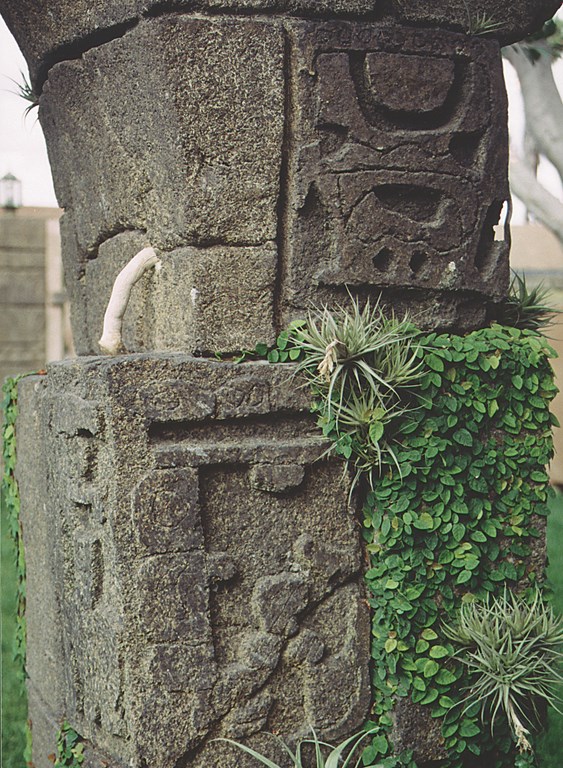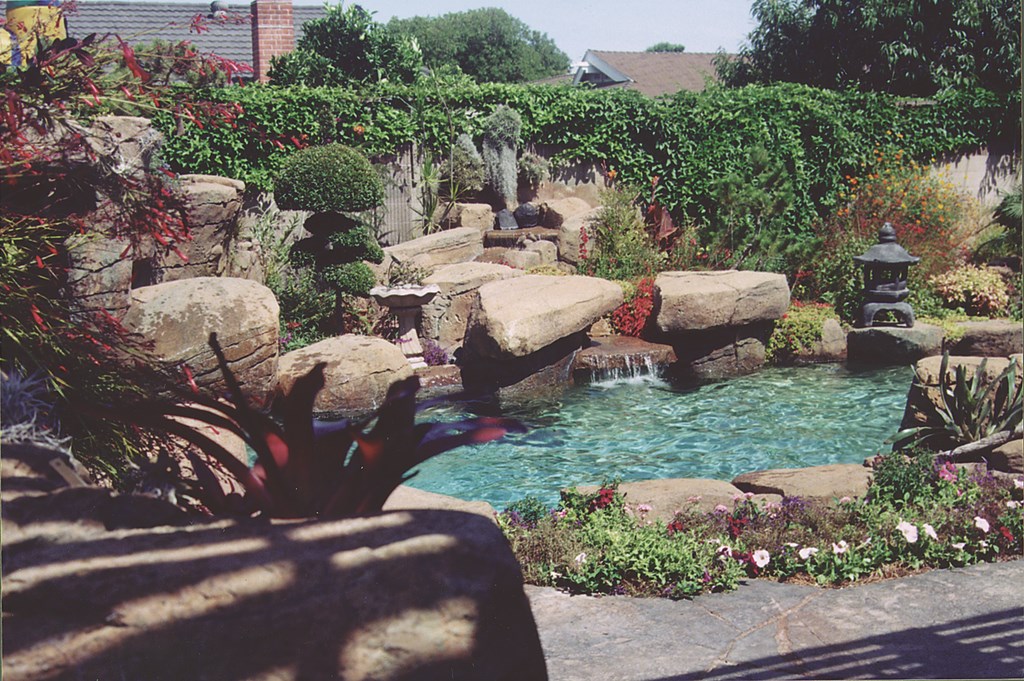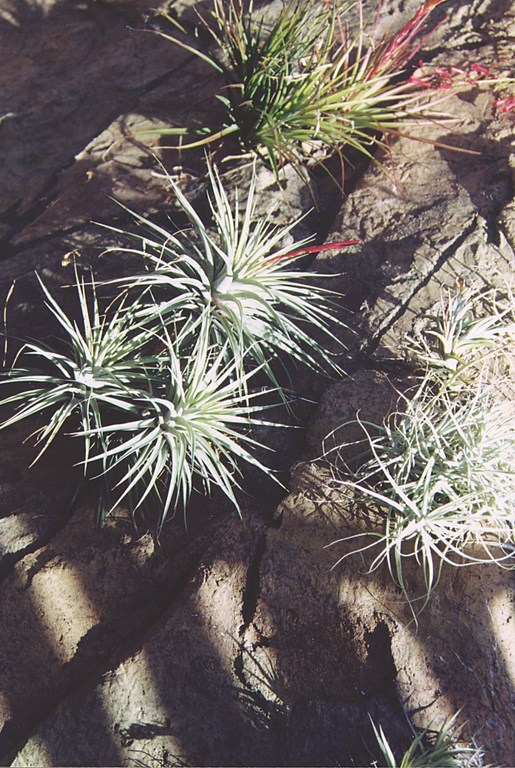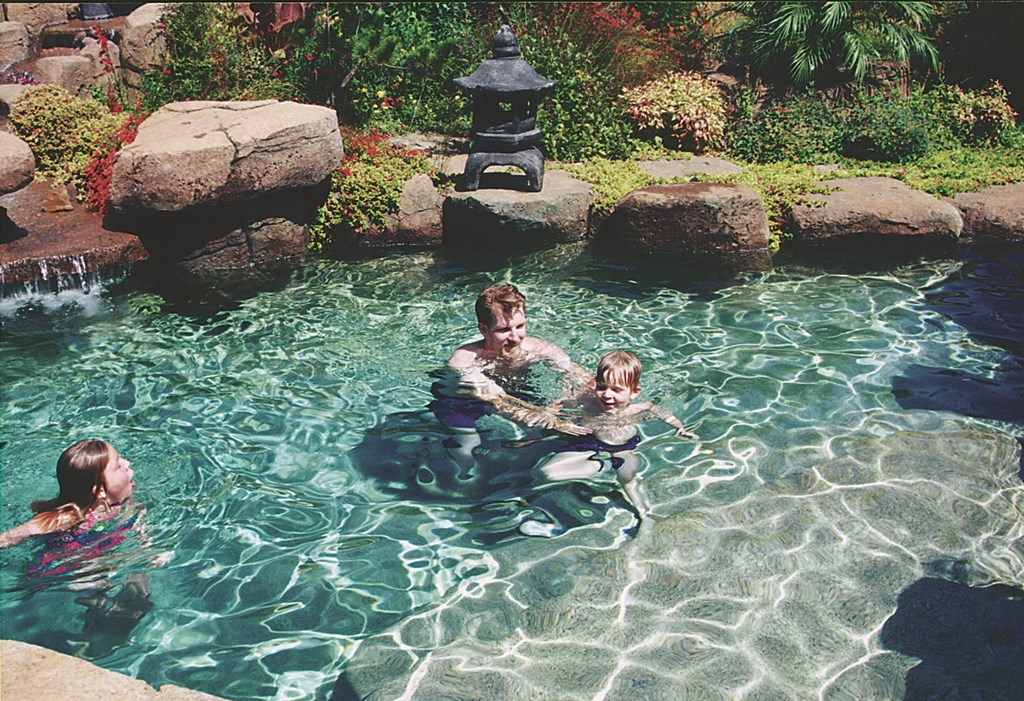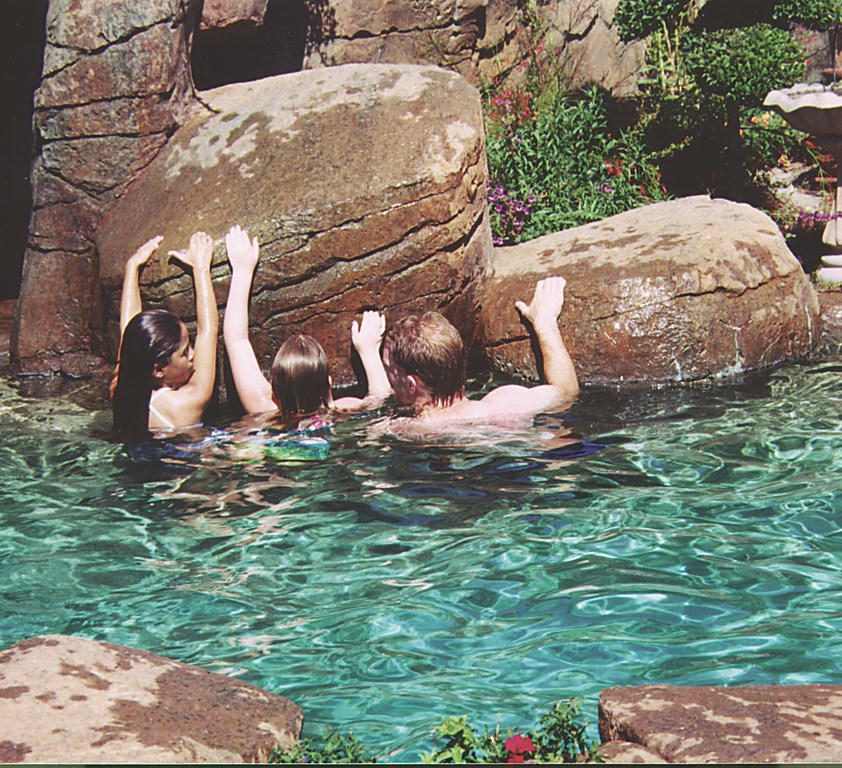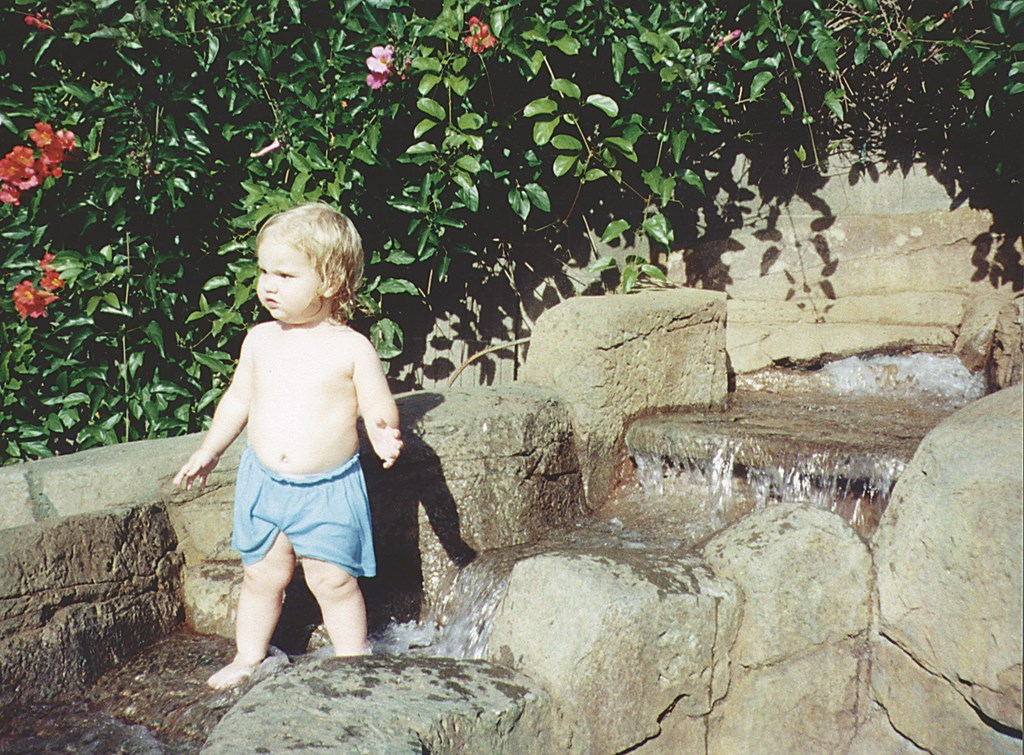Sculpted for Fun

It’s something we in the business overlook all too often: Swimming pools, kids and summertime go together.
That’s why pools have been so enduringly popular, even at a time when watershapers seem to be focusing more than ever before on principles of design and how their work can be artfully integrated into the landscape.
I came to building pools from an extensive background in building man-made rocks for theme parks, which has colored my perspective on the way my pools are used. I’ve also been swimming in backyard pools since I was a kid, and I’ve built all sorts of rockwork designs for all sorts of people. And in one way or another, my own associations with fun in the sun have influenced almost every project I’ve ever done.
My clients are mostly what you’d describe as middle class and upper-middle-class folks who are looking for something special. In all cases, my work involves highly sculptured and carefully finished artificial rock in naturalistic designs, and I strive to create formations that are believable – and also suitable for climbing, diving, lounging and the raucous play of children of all ages.
HAPPY ACCIDENTS
In almost every job, I re-create rock formations I’ve seen in nature. If you look at the world in the right way, nature abounds in fun features, alignments, nooks and crannies that can easily be adapted to backyard watershapes.
When rock climbers scale sheer walls, for example, they look for (and generally find) crevices, cracks, outcroppings and shelves that provide hand- and footholds. When the cliff divers of Acapulco and other places take their death-defying plunges, they’re using natural-rock platforms that in many cases cantilever out over the water. And how many rock formations have played host to sunbathers and hikers out to catch some rays?
| The peaceful, well-composed, entirely naturalistic pool seen at the top of this article changes in impression (but not in appearance) once children are introduced to the scene. Now the varying levels of man-made rockwork (left), the multiple paths of access (middle left), the hand-holds (middle right) and details such as the integrated ice bucket for cold sodas (right) all come fully into play – literally. |
I consider the forms I pick up on hikes and walks to be happy accidents: The effects I spot truly are “natural” – and also happen to be just the right shape and in just the right place for a specific purpose. Here are some examples of these happy accidents at work:
[ ] Diving rocks are by far the most readily “available” of natural shapes and have made diving boards a thing of the past as far as my pools are concerned. For the most part, people I know aren’t really concerned about the possibility of a springboard effect so much as they are looking for an elevated place on which to stand before jumping into the water.
For many projects, I’ve designed large, flat rock areas on different levels or plateaus. This variable-height approach provides good access to a diving rock slightly cantilevered over water deep enough for safe diving and to other rock structures around the perimeter of the pool that offer interesting places to sit. Many of these flat spaces are linked as well to entry and exit features, such as small slides or little wallows where bathers can lounge in shallow water in what amounts to a rookery for people.
|
Model Behavior I build scale models in clay for many of the projects I tackle. It’s a great sales tool, but much more than that, they work as three-dimensional guides for my excavator, steel crew and gunite applicators. I started using models when I found that flat drawings weren’t enough to enable my clients to visualize the installation and size up the physical relationships among the shapes. Models let us discuss details great and small in very real terms and also help me pull suggestions out of them about the placement of certain elements where their choices are important. I usually build the models to scale and by hand. For the most part, I don’t worry about color or texture: This is about getting the physical dimensions correct. And I don’t kid myself: Building models is great fun, and they help me by letting me try things out in 3-D and better understand the designs I’m creating. Model building does take practice, but if you’re already in the business of creating three-dimensional shapes at full scale, how much harder can it be to work on a small scale, too? — R. W. |
There are also different step configurations that set up large, submerged shelves that enable small children to wade into the pool – or adults to relax partially submerged in the water. You see these “wallows” in nature all the time, created by large animals moving in and out of a body of water. I use them to create interesting ways to slide in or climb out of the pool.
[ ] Seating configurations represent yet another area where you can be extremely creative. I set up all sorts of seating around a pool’s edges or a fire pit or adjacent to planted areas. Or I’ll set up flat areas in my waterfall structures that serve a dual purpose by providing easy climbing access or places to sit. And in some cases, they offer an easy platform for jumping into the water.
One of the really popular features you see in all sorts of pools these days are benches placed behind waterfalls. I usually add to the arrangement by creating places to sit right in the flow of water: This is something that kids really love, even if it’s just sitting in the flow of a small cascade into a stream or pond in the structure of the waterfall itself.
[ ] Privacy zones are increasingly popular as a way to conceal certain views or provide more intimate settings. Many of my clients go the whole route and order up large grottos with seating on the inside, but I also use outcroppings and walls to cut off views of things such as equipment pads, neighboring yards or portions of my clients’ yards that are considered separate from the pool area. Rockwork can also be used as an acoustic buffer to mask noisy pool equipment.
| Seating areas set up under waterfalls are particularly popular among my clients: Their kids love having the water splash over their heads – and I’ve seen more than a few parents join in on the fun. |
[ ] Small details is where I have some of my favorite designing fun. I’ll work in hollowed-out pockets that can be used to stash ice and drinks, or small flat areas on which to securely set plastic cups. I’ll also shape a wide array of small crevices and spaces to accommodate plantings as well, or set up rock outcroppings to hide sources of lighting or even stereo speakers.
[ ] Slides are another family favorite, but I have to admit they pose the greatest of all challenges when it comes to keeping things natural. Flumes are tough to conceal, and steps leading up to them have a hard time looking anything other than man-made.
That’s not enough to deter me. I’ll texture and finish these parts of the project to look as natural as possible – at least so they don’t conflict with the other rock and plant elements. Even though the results may not look 100% natural, kids love them so much that many of my clients are willing to sacrifice a completely natural appearance in the name of fantastic summer fun.
GETTING IT RIGHT
After years of working with artificial rock, concept and execution now go hand in hand for me: I know my capabilities and am seldom constrained any more in what I can accomplish. But reaching a level of performance where there’s not much beyond my reach didn’t come overnight and is, in fact, the product of years of experimentation, trial and error.
I use two basic approaches: I either build the rocks on site once the pool shell is complete, or I’ll contour shapes into the gunite itself. (Depending on the situation, I’ll sometimes use both techniques.)
| Slides offer a real challenge to naturalistic designs, basically because there isn’t much you can do to hide a flume. But they are very popular, so when I build one, I pay special attention to making their surrounding rockwork as dramatic as possible, creating a visual distraction that softens (even if it can’t overcome) the flume’s intrusion. |
About half of the time, I’ll place steel armatures in the shell’s cage to be used as guides by the gunite crew. The rest of the time – and usually on projects where the weight of the gunite is a consideration – I’ll have the crew shoot a broadened footer at the top of the bond beam and separate rock elements from the pool structurally with mastic joints.
In either case, it all starts with the steel: The shapes I create with steel armatures always dictate how the finished product will look, and I’ve learned that the more detail you put into shaping the steel, the more detail will be revealed later on. A key lesson I’ve learned is that the material on top of the steel takes up a lot of space. If, for example, I want to create a crevice in a rock face that’s only a couple of inches wide, that same crevice in the armature will be eight or ten inches wide.
As for the rocks themselves, I use mostly concrete rocks created on site as well as pre-fabricated panels in certain situations. The material is plaster modified with a variety of admixtures that affect workability. It’s not a standard sand/cement/water mixture by any means and is part of the process of experimentation and trial and error I just mentioned.
|
Coloring Creatively Natural rockwork comes in such a kaleidoscope of colors that it’s necessary to use a wide range of techniques to capture in artificial rock the appearance of things people have already seen in nature. To that end, I use a range of concrete dyes, topcoats and various application techniques. Much the same as the sculpting and texturing pushes me to experiment and always increase my range of techniques, so does the finishing. The thing about rocks in nature is that they tend to be very complex. In real rocks that are really hammered by the sun, for example, you’ll see a lot of colors that come from UV exposure and oxidation of the rock materials – lots of reds, yellows, oranges and rusts. Other rocks with different mineral compositions and less exposure to the sun tend to cooler colors – grays and blues and greens. In some rocks you’ll all of these colors and more. We’re patient in approximating these appearances. In some cases, we can do it with one or two colors, but in many cases we’ll end up using seven or eight colors in multiple coats that give an appearance of real depth. I start by painting everything off-white to give myself a blank canvas and an ability to take off in any direction I want. If I then add some gray, for example, I’m already heading in a specific direction. And I’ll use different hues of the same color and different application techniques to expose and conceal background colors. I may work from light to dark in order to create depth, or dark to light depending on the type of rock I’m using for inspiration. Experience plays a big role here. I keep detailed records of all of the finish schedules I’ve ever used so I can re-create exact looks for the same client or for another client who wants the same thing. (I’m willing to engage in guesswork the first time I do something, but I don’t want to miss the mark later on!) The same goes for the sealers I use: I work mostly with acrylics because experience has showed me they don’t alter the appearance of the finish or yellow over time. — R.W. |
I use cement materials at two stages of the work: First to create a structural substrate and second to add textures. I use a variety of accelerators and retardants to control the medium at both stages.
Some of the plaster recipes I use are very good for carving large shapes, for example. Other mixtures are designed to create certain types of surface textures. I’ll also add fiberglass to the plaster or different aggregate types or different setting agents – there’s a whole art and science involved here.
I also use a large range of tools and techniques. There are many types of brushes and trowels (some we make ourselves). Then there’s foil and plastic, water and even dirt and plant material. All of these techniques require careful examination of how concrete mixtures behave as they set and are manipulated. I’ve come to recognize windows of opportunity when it comes to texturing, for example, and how those windows will change depending on temperature and humidity.
ELEMENTS OF SURPRISE
Each project is a little bit different, and I’ve learned to be ready for surprises, no matter how well I think I have the whole process figured out.
I’ve been on jobs where we’ll have an entire section carved out and ready to go – and then it rains for ten minutes while the plaster is still pliable. This provided a new and completely different sort of texturing that in some cases actually improved the effects I’ve been trying to achieve.
| Getting the steel just right to support the structures I design takes a lot of imagination and on-site supervision: You can’t say, “Build a multi-level rock mountain over there” and leave it at that. To speed the process, I use scale models in clay to help my crews visualize what we’re after – and then watch every step of the process to make certain they have enough information to get the job done right. |
Taking my cue from Mother Nature, in some cases I’ll now spray new artificial rockwork with a hose, letting the water run down its surfaces and surprise me with the results. If you’re using the right mix schedule for the cement and spraying it at the right time, the water will carve wonderful details – a technique perfect for creating rivulets or natural paths of water flow.
I’ve found other finishing techniques that are a bit off the beaten track. Often, for example, I’ll crumple sheets of foil and press them onto wet cement to transfer impressions of random cracks and creases to the rock. I’ve taken dirt clods and thrown them at the wet cement, then come back once the cement is set up and pressure wash all the dirt away. This leaves pockets that look remarkably like the trapped air bubbles you see in lava rock.
| In finishing artificial rock, we’re not talking about anything much more complicated than making impressions on wet concrete. So why not get creative and create Maya-inspired temple stones set up with planting spaces to capture a wild, subtropical look? |
Carving at different times during the setting process is another approach I use in coming up with different ways to get new results. Basically, there are no limits to the techniques you can develop and use on your own. I’ve also found all sorts of techniques for stamping and embossing artificial rock to create the illusion of fossilized plant material. Avoiding repetition is the key in this type of technique, so I work in what I call an “inconsistently consistent” pattern.
What I’m talking about is no more complicated than pressing different materials into wet cement, but the patterns you create will either make or break the believability of the work. That said, stamping and embossing are really just the beginning of the process that includes further carving and brushing to create more detailed textures.
As mentioned above, I also use some prefabricated panels – an entirely different animal. I make the panels myself using rock formations I find in nature, and I use them most often when I’m looking for a highly detailed appearance with features from bold to subtle. Generally, I set these up in high-visibility areas, and they let me work both quickly and efficiently with good results.
| Here’s another project that offers a Japanese-inspired impression of serenity (top left) and ample spaces for special plantings (middle left) – a package certain to please adults. But when children young or old arrive on the scene, raucous good times are had by all. The beach entry provides smaller children with ample opportunity to get used to being in the water (middle right), the rocks provide hand-holds for kids playing in the deep end (right), and a small, multi-level stream with waterfalls gives toddlers a chance to cool off in the shallows (bottom left). |
What I said above about trial and error and experimentation applies to my work even now: I take chances and try new things, and sometimes they don’t work the way I want them to. This sometimes means ripping out sections of work because they just won’t make the grade, and I don’t worry about it too much because the time I spend learning a new trick on one job will invariably be put to use in another job down the line.
I’ve always been pretty fanatical about expanding my own bag of tricks. I see it as time well spent.
WORLDS OF FUN
Regardless of the size of the job, I work very hard to give all my customers something creative and interesting – and most of the time that involves building rockscapes that quickly become the envy of every neighborhood kid.
|
The Shape of Fun If my experience with artificial rockwork and swimming pools has taught me anything, it’s that it is possible to increase the enjoyment a family will derive from its pool without driving them away with an extraordinarily high price. A great many of the middle-class people I deal with are considering whether to spend their money on a recreational vehicle or an extended vacation – or a swimming pool. When I successfully demonstrate that the pool will not only be attractive to look at, but it will also be a source of tremendous fun because of the way its rocks are designed, they are far more likely to be persuaded to spend their money in their backyards. Many pools I’ve done were built specifically with the idea of creating a place for the neighborhood kids to gather and spend their playtime in the safety and security of the home environment. When that aspect of pool ownership is a priority, the more fun that’s built into the design, the greater the value that investment represents to the homeowner. When I design, I think back to my childhood and imagine what it would have been like to have all of these structures to climb on and jump from and hide behind, and it’s usually fairly easy to get my clients to visualize with me. And what I find as a result is that many of the adults I’ve worked with will end up playing in and enjoying their pools right along with the kids. — R.W. |
I’ve made many friends among my clients along the way, and I think it has a lot to do with the fact that I keep the focus on fun. I offer them options and the opportunity to express their thoughts about the details that will go into their projects; they develop a sense of collaboration, and it helps us work even that much more closely together.
One of my favorite things to do is to attend barbecues or birthday parties at clients’ homes long after my work is done: It gives me a chance to see how my work is faring in the real world.
It sounds like a cliché, but the truth is there’s nothing like the feeling I get when I see smiles on faces and hear the laughter of kids climbing all over one of my projects. As I said up front, that’s what summer and swimming pools are all about.
Richard Winget is founder of Authentic Environments, a firm that specializes in custom and themed artificial rock designs and installations from a base in Huntington Beach, Calif. Winget developed his skills in artificial rock design and installation through years of working on Southern California’s major theme parks and established Authentic Environments in 1994 to translate that knowledge to mainline residential and commercial projects. He has traveled extensively, studying geological formations and ancient stonecraft around the world.










